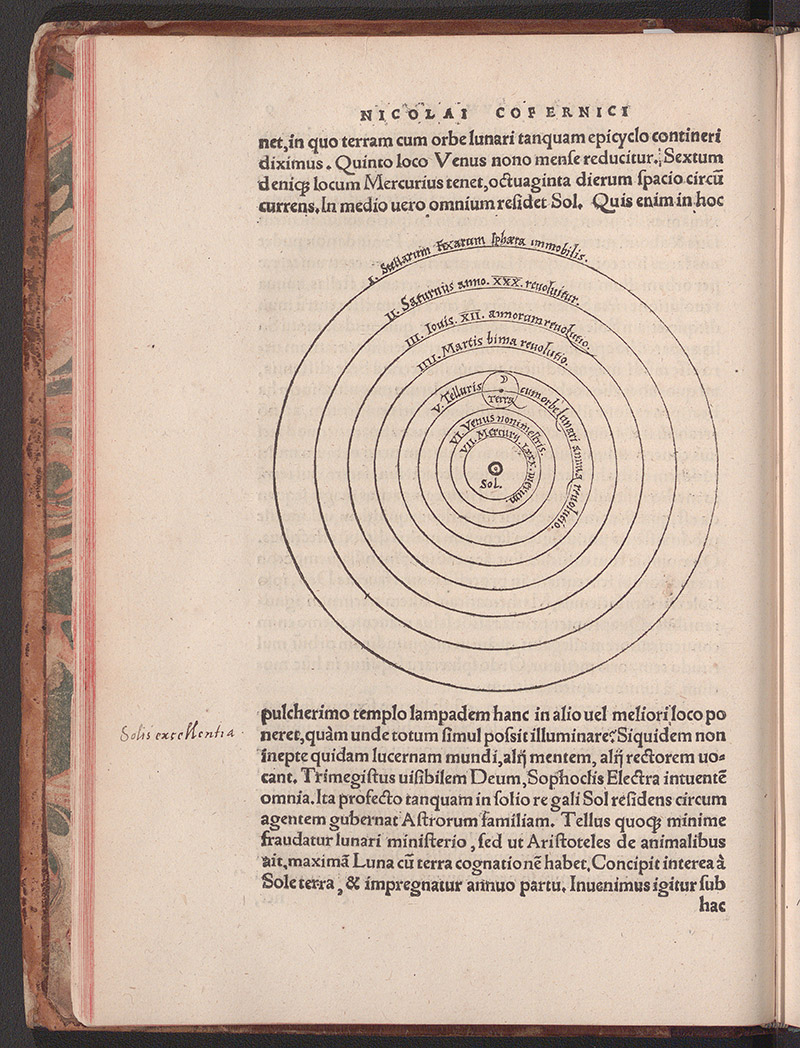Heliocentrism

- Woodcut depicting the heliocentric system, pag. 9v.
- Nicolaus Copernicus (Mikołaj Kopernik) (1473-1543).
- Nicolai Copernici Torinensis de Revolutionibus orbium coelestium libri sex.
- Nuremberg: Johannes Petreius, 1543.
The heliocentric model of the universe was not an entirely revolutionary concept in the sixteenth century but at that time it had a long history of 2000 years, including the tradition represented by the so-called Pythagorean philosophers. In his preface to the pope, Copernicus acknowledged this ancient tradition in an attempt to minimize the potentially transgressive content of the De Revolutionibus.
The essence of Copernicus’s heliocentric system is illustrated by the woodcut shown here. Curiously, the layout of the treatise’s most famous illustration is wrong. The fact that each of the labels, I-VII, are placed next to their respective circles suggests that the circles are orbits, which is an anachronistic concept. Instead, the labels should be located between the circles to depict a cross-section of the cosmos consisting of a series of orbs or nested spheres. Furthermore, the labels I-IIII are misplaced. “IIII” should occupy the next blank space above label V, the earth and moon, implying that each of the three previous labels should move to the next space.